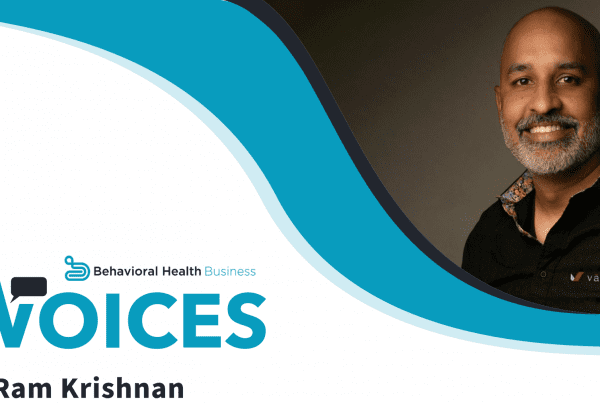If you’ve decided to handle billing for your behavioral health practice in-house, congratulations! You’ve started a journey that will give you more control over your business finances and grow your management skills.
Yes, mental health billing can seem daunting at first, but plenty of clinicians and practices manage it with great success. So can you—with the right tools and guidelines.
Here’s how to get the most from your practice billing experience, and hopefully grow your bottom line, too.
Start with realistic expectations
It’s important to start with realistic expectations about the mental health billing process. It won’t be a fast and easy detail that you add on to the edges of your regular workflow. To take on practice billing, you must devote time to learning and accommodating new processes.
You or your staff will spend time creating clean claims, monitoring them after submission, correcting and resubmitting rejected claims, negotiating denials, collecting payments from patients, and reconciling bank statements. Skip any of these steps and you risk losing some of the reimbursement you’re due.
Expecting too much from yourself too quickly will lead to disappointment and possibly burnout, neither of which are a good foundation for competent practice management. Keep the following in mind as you set your expectations:
- Quash perfectionism. When you first start billing for your practice, expect a learning curve. You won’t know everything, you may not have as much time to learn as you’d like, and you will probably make mistakes. Let mistakes inform your process and make it even better.
- Set sensible income goals. Use billing best practices to your advantage to maximize reimbursement for services, but be patient with the process. It will take time to hone your service coding skills and become adept at negotiating with payers. Over time these changes will increase your revenue, but it may not be an overnight difference.
- Take the long view. Focus on growing your skills a little more each day. That’s an attainable goal that won’t leave you disappointed. Most growth doesn’t happen all at once, but through small improvements.
Find the right EHR billing technology to do billing for your practice
Find EHR billing solutions that set you up for success. Your billing strategy is affected by what your software can (and can’t) do.
The complexities of claims generation, submission, and tracking demand a specific blend of features.
Flexible
First, your billing solution must be flexible in order to meet the coding requirements of individual insurance companies. You may need different coding prefixes for the same service when billing different providers, and a software that can accommodate these differing guidelines will save you time and net more money.
Reports
A system with plenty of reporting features is your best analytical tool to understand what’s happening in your revenue cycle. Billing software should provide an overview of aging claims and show how many days each claim has been waiting. This helps with cash flow and allows you to fix mistakes and denials more quickly.
Payment breakdown reports show you which payments you’ve received from insurance and which from patients on any given day, so you can reconcile this with your bank statements.
Productivity reports for your providers, while not directly related to billing, nevertheless help you make your practice more profitable. You can see which providers are the most efficient with their time and which might need help remembering to submit bills on time.
Automation
The more automation involved in your workflow, the smoother billing management will be. Find an EHR with a built-in billing feature that auto-generates bills based on logged appointments to free up providers’ time and keep claims from falling through the cracks. Ideally, automatic claims creation would pull information right from your patient records to prevent the typos and misspellings that can creep in with manual bill creation.
Automation should make work easy while allowing you ultimate control over the process. For example, it should be easy for you to create a claim manually if needed, or to add something on to an auto-generated document.
Dashboard and tracking
A commonsense dashboard and claims tracking system allows you to respond to aging, rejected, or denied bills promptly and maximize your chance of timely payment. It’s easier to do this for all bills through one EHR than to track bills through the portal of each insurance company and clearinghouse you contract with.
A user-friendly dashboard will allow you to move through the steps of billing efficiently, without wasting hours on tech support and troubleshooting.
Eligibility checks
Eligibility checks before appointments will prevent headaches and lost revenue. You and your patient need to know what their insurance will or won’t cover, so that the patient can assess their ability to pay and you can collect a patient payment right away.
The most convenient way to conduct eligibility checking is through an EHR, especially one that supports batch eligibility checking. You can also contact insurance companies individually via online portal or phone, but the ease of checking via EHR makes it worth your time to investigate the practice management solutions that offer this.
Set up a repeatable process
You and/or your staff should compose a written process for billing procedures that every staff member will follow. This guide should include every step from creating and coding the bill, to submitting it, tracking it, following up on rejections/denials, and receiving payment. This is the best way to stay on top of the work and prevent oversights.
Document what information to gather from new patients, when to perform the eligibility check, and how claims are generated once services are complete.
Keep a schedule for submitting claims, tracking them, investigating aging claims, and responding to rejections and denials. Who will do the tracking, and how often? Who will fix and resubmit rejections? Who will appeal denials?
Keep in mind that you should also check insurance coverage for existing patients periodically. Some practices run the insurance information for every patient before each appointment, because a patient’s insurance status may change at any time. Some practices find this checking frequency too burdensome, and instead set particular calendar dates to update insurance info. Whatever you choose, it should occur on a regular basis.
Create a discipline
Create a discipline of regularly managing your revenue cycle. You can’t grow lax on it or your work will backlog quickly and you’ll lose revenue.
What does discipline look like? It looks like making time to check each claim with an eye for detail before you send it. It looks like running the above-mentioned reports on a regular basis, even when you’re quite busy. It looks like filing claims promptly after treatment so as not to risk missing a deadline.
Check your aging claims frequently in order to keep on top of rejections and denials. A good rule of thumb is to check aging claims every 30 days.
And, if you have billing staff or a third-party biller, check in with them periodically to ascertain how their work is going. Don’t assume you can leave the process in their hands and forget about it. Make sure your billers are running the reports, checking the claims, and following up.
What does a good billing cadence look like?
The cadence of these tasks will differ depending on the size of the practice and the number of individuals devoted to the billing process.
For individual therapists, it’s best to stay on top of documentation and claims submission throughout the week as you see patients. At the end of each week, designate time to review any rejected and unpaid claims.
Larger practices with a dedicated biller on staff should aim to hit every part of the revenue cycle every day. Staff should be in the habit of submitting each day’s claims, working on a portion of claims that require follow-up, checking bank statements, and collecting patient payments. If a practice is large enough to have one or more billers on staff, the billing workload is heavy enough to require constant and thorough attention.
All providers and practices should aim to review their list of aging claims every 30 days or so.
Get it done with Valant
Valant’s EHR with built-in billing will help you be successful at billing for your own practice. Our suite of features was designed for behavioral health providers and your unique needs.
With auto-generation of bills, an easy submission process, and user-friendly claims tracking, you’ll be able to monitor your billing with ease and use your energy where it’s needed most: treating patients and negotiating with insurance companies to get your full due.
Contact Valant to learn more about our efficient billing solutions.





